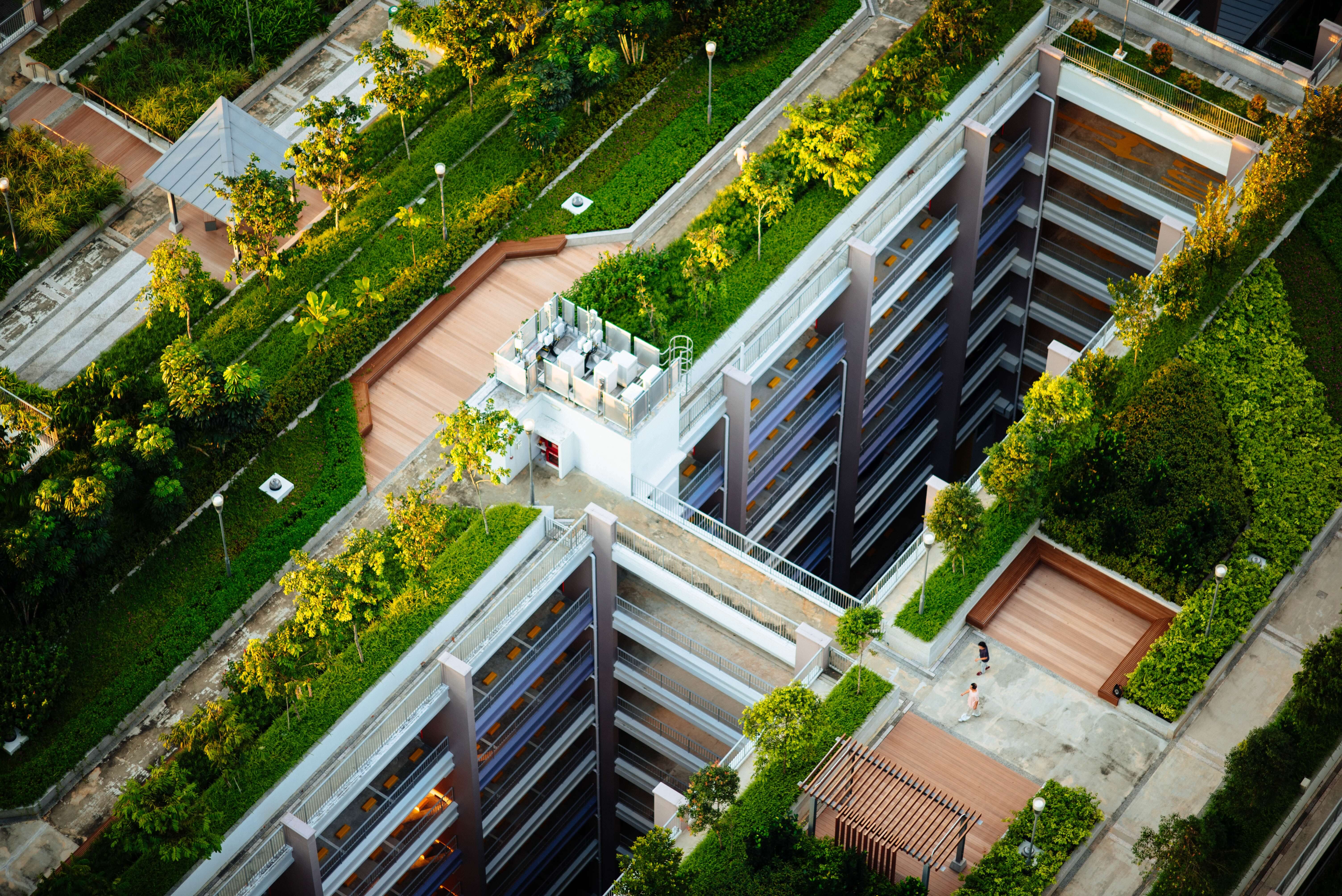Every structure we build, and every area of land we develop has an environmental impact. The goal of environmentally conscious decisions is to minimize the impact of our actions and consumption. Architects and design professionals use a framework developed by the U.S. Green Building Council to rate buildings regarding health, energy efficiency, and cost savings. This rating system is referred to as Leadership in Energy and Environmental Design or LEED.
What is LEED Certification?
There are six rating systems in the current version of LEED, LEED v4.1:
- LEED for Building Design and Construction (BD+C)
- LEED for Interior Design and Construction (ID+C)
- LEED for Residential BD+C
- LEED for Cities and Communities
- LEED for Building Operations and Maintenance (O+M)
- LEED for Neighborhood Development (ND)
Project teams use the LEED system to identify requirements, develop a certification strategy, and select the LEED credits the project will strive towards. The process provides opportunities to create more sustainable, resilient, healthy, and equitable spaces. A LEED-certified project is part of green building that attempts to mitigate the impacts of a building or site throughout the life cycle of a building. Project planning, design, construction, operations, and demolition must consider energy use, water use, indoor environmental quality, material selection, site, and location. LEED provides a framework for these projects and rewards innovation and best practices with different levels of certification.
Does LEED Certify Products?
LEED does not certify and building products or materials. LEED also does not certify services or companies. Rather, LEED certifies green spaces, buildings, neighborhoods, homes, cities, and communities.
The LEED rating systems awards credits for the environmental performance of buildings based on the characteristics of the whole building. Credits are not awarded based on the use of a specific product. Project teams must comply with a percentage of all products and materials to meet the performance standards and requirements.
Can Building Materials and Products Contribute to LEED Certification?
While building products are not certified, building material and product manufacturers can examine the credit categories to see which standards, requirements, and third-party certifications can be achievable by a product. The LEED rating systems are available for download from the LEED Credit Library. The most commonly applicable categories are Materials & Resources (MR) and the Indoor Environmental Quality (EQ) credit categories. Credit library options are decided by the project team. Manufacturers can coordinate with project teams regarding the needed documents or certifications.
Can Manufacturers' Promotional Product Information Reference LEED?
Manufacturers can reference LEED, provided the language does not state the product is endorsed by USGBC or the LEED program. Products that meet LEED criteria can state they contribute to earning points needed for LEED certification. However, products cannot be said to earn points toward LEED certification on their own.
If a product is manufactured in a LEED-certified facility, manufacturers can use the LEED manufacturing mark to promote the product.
Are you a building material or product manufacturer manufacturing products that conform to the USGBC’s environmental requirements? Do you manufacture products that are dedicated to minimizing our deleterious effects on the environment? If so, reach out to CADdetails about showcasing your company on SpecGreen, and promoting your message to our over 657,000 registered design professionals. Book a call with us today to learn more.
Cover image © CHUTTERSNAP on Unsplash


-2.png)